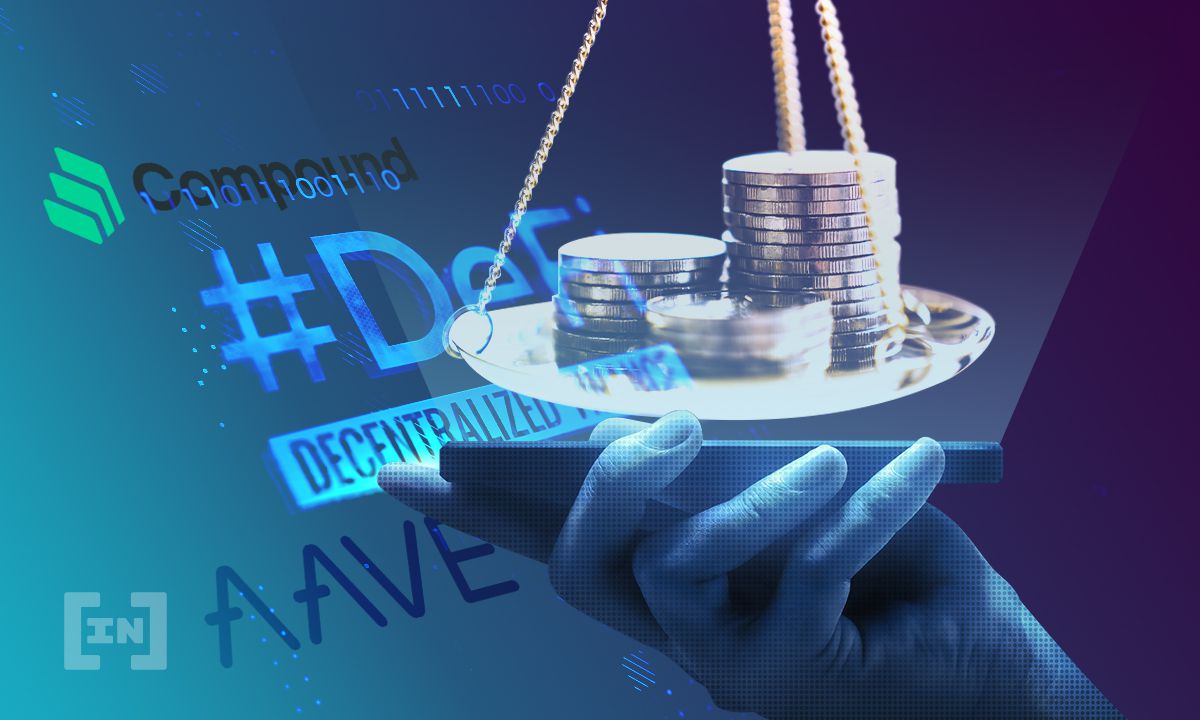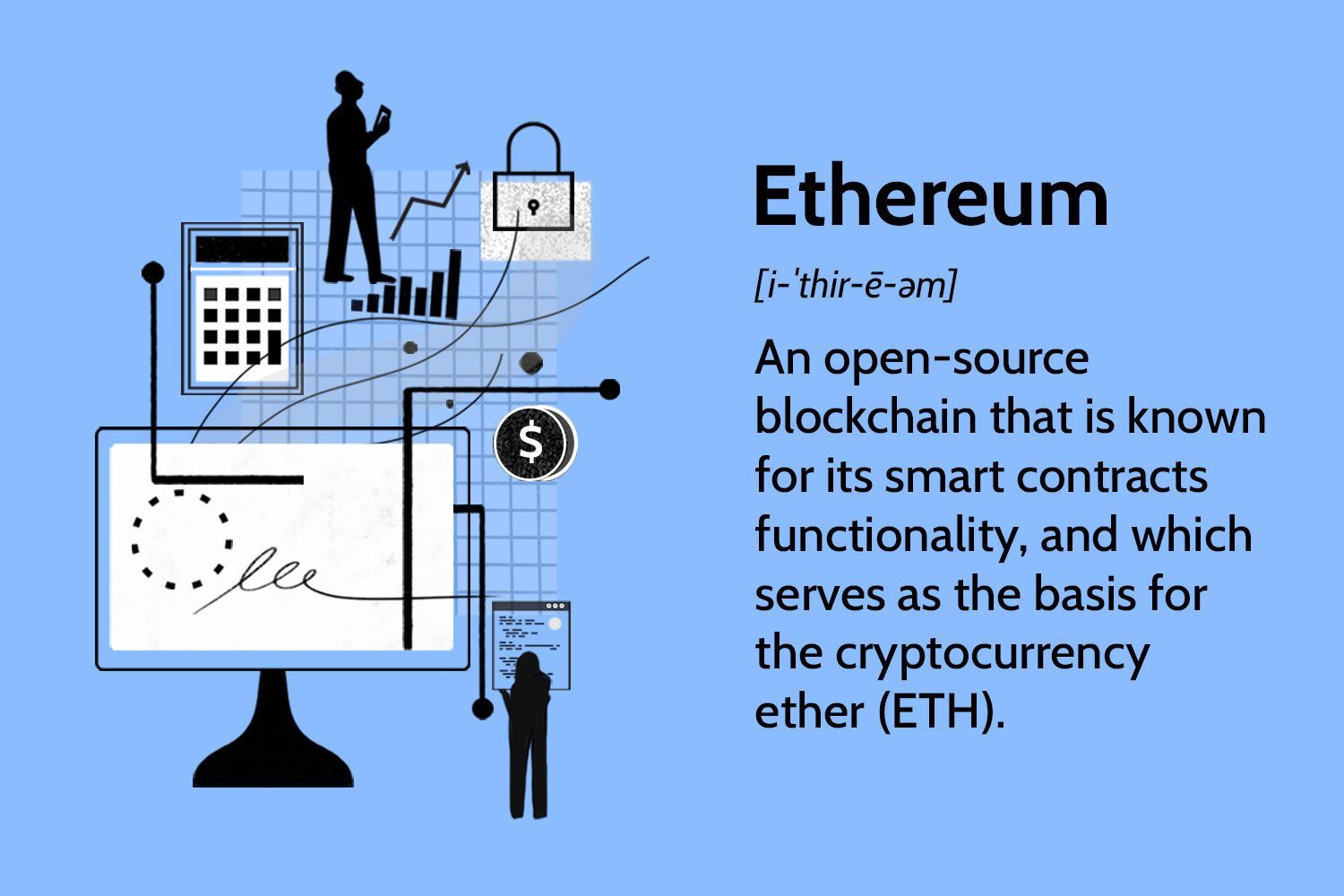Introduction
Welcome to this guide on how to write a contract for lending money. Whether you’re lending money to a friend, family member, or even a business, having a clear and legally-binding contract in place is essential to protect both parties involved. A well-drafted contract can help ensure that the terms of the loan are understood and agreed upon, reducing the potential for misunderstandings or disputes in the future.
Creating a contract for lending money may seem overwhelming at first, especially if you’re unfamiliar with legal terminology or unsure of what to include. However, with the right guidance, you can draft a comprehensive and enforceable contract that covers all the necessary details.
In this guide, we will break down the process into easy-to-follow steps, providing you with a roadmap to create a solid lending contract. From establishing the terms of the loan to specifying repayment terms and outlining consequences for default, we will cover all the essential elements that should be included in your contract.
It’s important to note that while this guide provides general information and guidelines, it is not a substitute for legal advice. Laws governing lending and contracts may vary depending on your jurisdiction, so it’s always a good idea to consult with a qualified professional or attorney to ensure that your contract complies with all applicable laws and regulations.
By following the steps outlined in this guide, you will be able to create a contract that protects your interests as a lender and provides clarity for the borrower. So let’s dive in and learn how to write a contract for lending money!
Step 1: Establish the terms of the loan
Before diving into the details of your contract, it’s crucial to establish the terms of the loan. This includes determining the amount being lent, the interest rate (if any), and the repayment schedule. Clear and concise terms will help both parties understand their obligations and prevent any confusion or disagreements down the line.
Start by stating the principal amount of the loan. This is the initial sum of money being lent. It’s important to be specific and include the currency and the exact amount, for example, “$5,000 USD.”
Next, outline the interest rate, if applicable. If you’re charging interest on the loan, clearly state the rate and how it will be calculated. This could be an annual percentage rate (APR) or a fixed amount. Remember to check your local laws as there may be legal limits on the interest rate that can be charged.
Now, move on to establishing the repayment terms. Specify the duration of the loan. Will it be repaid in monthly installments over a set period of time, or will it be paid back in a lump sum at a specific date? Clearly state the date when the loan is expected to be repaid in full.
In addition to the repayment schedule, consider including any late payment fees or penalties. This provides an incentive for the borrower to make timely payments and ensures that there are consequences for failing to do so.
Lastly, consider including provisions for early repayment or modifications to the loan terms. This gives the borrower flexibility in case they want to pay off the loan ahead of schedule or if the circumstances change. Be sure to clearly outline any conditions or fees associated with early repayment or modifications.
By establishing the terms of the loan in your contract, you set a solid foundation for a successful lending agreement. The borrower will have a clear understanding of their obligations, and you, as the lender, can confidently proceed with the rest of the contract knowing that the important terms have been agreed upon.
Step 2: Identify the parties involved
In any contract, it is crucial to clearly identify the parties involved. This step ensures that there is no ambiguity about who is lending the money and who is borrowing it.
Start by clearly stating your full name, address, and contact information as the lender. It’s important to include your complete legal name to avoid any confusion or disputes in the future. Additionally, include any relevant details about your business, if applicable.
Next, identify the borrower by stating their full name, address, and contact information. Just like with the lender, including the borrower’s complete legal name is essential to establish their identity and prevent any misunderstandings.
If the borrower is a business, include additional details such as the legal name of the entity, its registered address, and any relevant business identification numbers.
In some cases, it may be necessary to include additional parties such as guarantors or co-signers. If there are any third parties involved who are providing a guarantee or assuming joint responsibility for the loan, make sure to clearly state their names, addresses, and contact information as well.
Clearly identifying all parties involved in the contract helps establish their roles and responsibilities. It also provides a clear record of who is bound by the terms of the agreement, making it easier to enforce the contract if necessary.
Remember to double-check the accuracy of all the information provided for the lender, borrower, and any additional parties involved. Ensuring that the identification details are correct will help avoid any potential confusion or complications that may arise in the future.
By clearly identifying the parties involved in your contract, you create a solid framework for the lending agreement. This step sets the stage for a transparent and legally binding relationship between the lender and the borrower.
Step 3: Clearly state the loan amount and repayment terms
One of the fundamental aspects of a contract for lending money is clearly stating the loan amount and outlining the repayment terms. This step ensures that both the lender and the borrower have a complete understanding of the financial obligations involved.
Begin by explicitly stating the exact amount of money that is being lent. This includes specifying the currency and providing the numerical value of the loan. For example, “The lender agrees to lend the borrower $10,000 USD.”
Next, outline the repayment terms. Specify the frequency of the payments, such as monthly, quarterly, or annually. State whether the payments will be a fixed amount or vary depending on certain factors.
Include the due date for each payment, whether it’s a specific day of the month or a specific date. This ensures that both parties are aware of when the payments are expected and helps avoid any confusion or late payments.
Consider including information about the accepted methods of payment. This could be through bank transfers, checks, or any other agreed-upon payment methods. Include the necessary details such as account numbers or payment instructions to facilitate smooth transactions.
In this step, it is also important to state how the repayment amount will be applied. Will the payments go towards the principal loan amount first or towards any accumulated interest or fees? Providing clarity on how the repayments are allocated helps both parties understand how the loan balance will be reduced over time.
Be sure to clearly state the consequences of missed or late payments. Include any late payment charges or penalties that may apply, making it clear that the borrower is responsible for meeting the agreed repayment schedule.
By explicitly stating the loan amount and repayment terms in your contract, you eliminate any confusion or misunderstanding. Clarity in this step allows both the lender and borrower to have a shared understanding of the financial aspects of the agreement, leading to a smoother lending process.
Step 4: Include any interest or fees
When lending money, it’s common to charge interest or fees to compensate for the use of the funds or administrative costs. Including the details of any interest or fees in your contract ensures transparency and helps avoid misunderstandings or disputes.
Start by clearly specifying the interest rate, if applicable. This can be an annual percentage rate (APR) or a fixed rate. Make sure to clearly state how the interest will be calculated, and if it will compound over time.
If there are any additional fees associated with the loan, specify them clearly. These could include origination fees, processing fees, late payment fees, or any other fees that may apply. Clearly state the amount of each fee and under what circumstances they may be charged.
It’s important to comply with any statutory limits or regulations on interest rates and fees that may be applicable in your jurisdiction. Make sure to research and understand the legal requirements to ensure your contract is enforceable.
Include a clear explanation of how the interest and fees will be calculated and applied. This helps both parties understand the total cost of the loan and any additional expenses they may incur.
By including the specific details of interest and fees in your lending contract, you establish a clear understanding of the financial obligations between the lender and the borrower. This transparency helps build trust and ensures that both parties are aware of the full cost of borrowing money.
Step 5: Define the consequences of default
In any lending agreement, it’s essential to define the consequences of default – when the borrower fails to fulfill their repayment obligations. Clearly outlining these consequences in your contract helps protect the lender’s interests and ensures accountability.
Start by specifying the conditions that will be considered a default. This could be a missed payment, late payment, or failure to adhere to any other agreed-upon terms. Be specific about the time frame and the number of missed payments that will trigger a default.
Outline the consequences of default. This could include late fees, penalties, or an increased interest rate. Specify the exact amount of these additional charges and how they will be calculated. It’s crucial to ensure that these consequences comply with local laws and regulations.
In some cases, the contract may include provisions for the lender to take legal action in the event of default. This could involve initiating a collection process, seeking a judgment, or even repossessing collateral (if applicable). Clearly state the course of action that the lender can take to recover the outstanding debt.
Include the rights and obligations of both parties in the event of default. This could involve providing a notice of default to the borrower, allowing a grace period for remedying the default, or pursuing legal recourse without further notice. Make sure that these rights and obligations are fair and align with the laws of your jurisdiction.
By defining the consequences of default in your lending contract, you establish a clear understanding between the lender and the borrower. This step helps mitigate risk and provides a framework for addressing any issues that may arise during the repayment period.
Step 6: Specify any collateral or security for the loan
When lending money, it’s common for lenders to require collateral or security to protect their interests in case the borrower defaults on the loan. In this step, you’ll specify any collateral or security that will be used to secure the loan.
Begin by clearly describing the collateral or security that will be used. This could be any valuable assets such as real estate, vehicles, equipment, or financial assets. Specify the details of the collateral, including its description, location, and any relevant identification numbers.
Clearly state the purpose of the collateral. Is it solely for securing the loan, or can the lender take possession of the collateral to recover the debt in case of default? Address any restrictions or limitations on the use or transfer of the collateral.
Include provisions for the valuation of the collateral. Specify the method or appraisal process that will be used to determine its value. It’s important to be specific to avoid any disputes or disagreements about the collateral’s worth later on.
Outline the conditions under which the collateral may be repossessed in case of default. Specify the specific events that would trigger the repossession, such as non-payment or breach of contract. Clearly state the process and timeline for the lender to take possession of the collateral.
If there are costs associated with maintaining or insuring the collateral, include provisions for the responsibilities of both the borrower and the lender. Specify who will bear these expenses and ensure that the details are clearly agreed upon.
By specifying any collateral or security in your lending contract, you provide an additional layer of protection for the lender’s investment. This step ensures that both parties understand their rights and obligations regarding the collateral and helps mitigate the risk of default.
Step 7: Determine the method and frequency of payment
Once the terms of the loan and repayment have been established, it’s important to determine the method and frequency of payment. This step ensures that both the lender and the borrower have a clear understanding of how payments will be made.
Start by specifying the accepted methods of payment. This could include bank transfers, checks, electronic payment systems, or any other agreed-upon payment methods. Provide details such as account numbers or payment instructions to facilitate smooth and convenient transactions.
Outline the frequency at which payments are expected. Common options include monthly, quarterly, semi-annually, or annually. State the specific due dates or the payment schedule to which the borrower must adhere. Clear payment terms help both parties avoid confusion and set expectations.
Specify the location where the payments should be sent. This could be the lender’s address or a designated bank account. Provide accurate contact information to streamline communication related to payments.
Consider including provisions for early payments or additional payments. This allows the borrower to pay off the loan ahead of schedule or make extra payments if they choose to do so. Clearly state any conditions or fees associated with early payments or additional payments.
Include instructions for late payments. Define the grace period, if any, during which the borrower can make a payment without incurring any late fees or penalties. Clearly state the consequences of late payments and any additional charges that may apply.
By determining the method and frequency of payment in your lending contract, you establish a clear payment structure that both parties can follow. This step ensures that the borrower understands their responsibilities and allows the lender to effectively manage the loan repayment process.
Step 8: Include provisions for early repayment or modifications
Flexibility is an important aspect of any lending agreement. In this step, you will include provisions in your contract that allow for early repayment or modifications to the loan terms, should the need arise.
Start by outlining the conditions under which early repayment is allowed. Specify any penalties or fees associated with early repayment, if applicable. Clearly state whether the borrower needs to provide notice or obtain consent from the lender before making an early repayment.
If modifications to the loan terms are permitted, specify the circumstances under which they can be made. This could include changes to the repayment schedule, interest rate, or any other agreed-upon terms. Clearly state the process for requesting modifications and any documentation or consent required.
Include provisions for any associated costs or fees that may arise from early repayment or modifications. This could include administrative fees or charges for recalculating interest. Make sure to clearly state the responsibilities of both parties with regard to covering these costs.
When allowing early repayment or modifications, it’s important to consider the impact on the overall loan balance and any outstanding interest or fees. Specify how any adjustments will be made and the effect they will have on the remaining payments.
By including provisions for early repayment or modifications in your lending contract, you provide both parties with the flexibility to adapt to changing circumstances. This step allows for a more dynamic and responsive lending arrangement, while still maintaining clear guidelines and expectations.
Step 9: Outline dispute resolution procedures
In any contract, including a clear and effective dispute resolution process is crucial to address any potential conflicts or disagreements that may arise between the lender and the borrower. By outlining dispute resolution procedures, you can help resolve disputes in a fair and efficient manner.
Start by stating the preferred method of resolving disputes. This could be through negotiation, mediation, arbitration, or any other agreed-upon method. Clearly specify which party will initiate the dispute resolution process and the steps involved.
Include a timeframe within which the dispute resolution process should be initiated, ensuring that it is reasonable and allows for a swift resolution. Clearly state how the costs associated with the dispute resolution process will be shared between the parties.
Specify the jurisdiction or governing law that will apply to the dispute. This ensures that both parties are aware of the applicable legal framework and can seek proper legal guidance if necessary.
If the lending agreement involves multiple jurisdictions, consider including a clause for selecting a neutral jurisdiction or using a specific international arbitration organization to handle the dispute.
Include a provision for the enforcement of any legal judgments or arbitration awards. This ensures that the resolution reached through the dispute resolution process can be enforced and binding on both parties.
Clearly outline the role of any third-party facilitators, such as mediators or arbitrators, if applicable. Specify their qualifications and any specific rules or guidelines that they will follow during the dispute resolution process.
By outlining dispute resolution procedures in your lending contract, you provide both the lender and the borrower with a clear roadmap for resolving any conflicts that may arise. This step shows a commitment to fair and reasonable resolution processes, promoting effective communication, and minimizing the potential for prolonged disputes.
Step 10: Sign and finalize the contract
The final step in creating a contract for lending money is to sign and finalize the agreement. This step ensures that both parties acknowledge and accept the terms and conditions outlined in the contract.
Start by including an “Execution” clause, indicating the date and location where the contract is being signed. This clarifies when the agreement becomes effective.
Both the lender and the borrower should sign the contract using their full legal names. Include space for their signatures and dates, indicating their consent and agreement to be bound by the contract.
If there are any additional parties involved, such as guarantors or co-signers, make sure to include space for their signatures as well.
Ensure that the contract is dated and that all pages are numbered and initialed by all parties involved. This helps maintain the integrity and completeness of the agreement.
Consider including a clause stating that any modifications or amendments to the contract must be made in writing and duly signed by all parties. This protects the original agreement from any unauthorized changes.
Once the contract is signed by all parties, make copies for each party involved. This ensures that everyone has a copy for their records, allowing for easy reference in the future if needed.
It’s advisable to seek legal advice or consult with an attorney to review the contract before signing. This can help ensure that the contract is legally enforceable and that it complies with all applicable laws and regulations.
By signing and finalizing the contract, both the lender and the borrower demonstrate their commitment to upholding the terms of the agreement. This final step solidifies the lending arrangement and provides a legally binding document that can be relied upon throughout the loan period.
Conclusion
Writing a contract for lending money may seem like a daunting task, but by following the steps outlined in this guide, you can create a comprehensive and solid agreement that protects both the lender and the borrower. From establishing the terms of the loan to outlining the consequences of default and including provisions for early repayment or modifications, each step plays a vital role in creating a clear and enforceable contract.
Remember to consult with a legal professional or attorney to ensure that your contract complies with local laws and regulations. They can provide valuable insights and guidance to help you navigate the legal intricacies involved in drafting a lending contract.
By following the guidelines in this guide, you can establish a fair and transparent lending relationship. Clear and concise terms, along with well-defined repayment schedules and consequences, help minimize the risk of disputes and misunderstandings.
Creating a contract for lending money is an important step that should not be overlooked. It provides clarity, protects both parties’ interests, and establishes a solid foundation for a successful lending agreement.
So, take the time to carefully consider each step, customize the contract to fit your specific needs, and ensure that all parties involved understand and agree to the terms. By doing so, you can confidently move forward with your lending arrangement while minimizing potential risks and maximizing the chances of a successful loan.

























